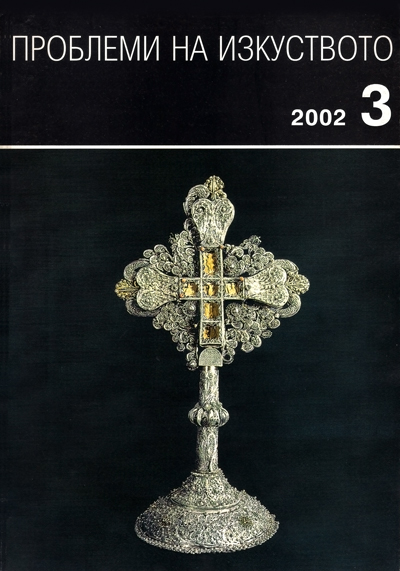
We kindly inform you that, as long as the subject affiliation of our 300.000+ articles is in progress, you might get unsufficient or no results on your third level or second level search. In this case, please broaden your search criteria.


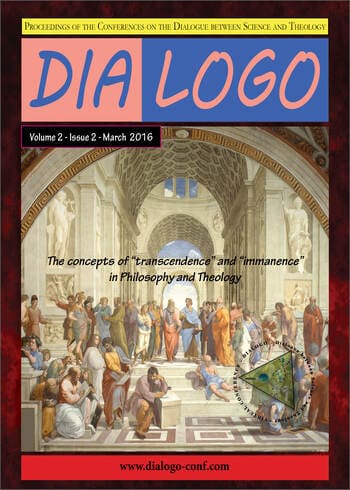
In philosophy of religion the term of Immanence is mostly applied to GOD in contrast to the divine Transcendence. This relation, as we will see here, it is not far from the truth since one cannot be without the other, however they are not to be put in contrast, but in conjunction. The one-sided insistence on the immanence of God, to the exclusion of His transcendence, leads to Pantheism, just as the one-sided insistence upon His transcendence, to the exclusion of His immanence, leads to Deism. These two can be separated, but the consequences are great for human knowledge and society; it is the two taken together that result in, and are necessary to Theism. But from the least complicated idea that even the name of God is a manifestation of His immanence contrasting with Deus absconditus, whose existence and name cannot be known or thought, theology and religion in general need to regard immanence of God as crucial for the acts of worship. What are the philosophical background for Christian theology to imply the immanence characteristic for God’s existence related to His creation? – This is the main question the present work tries to answer as an overview.
More...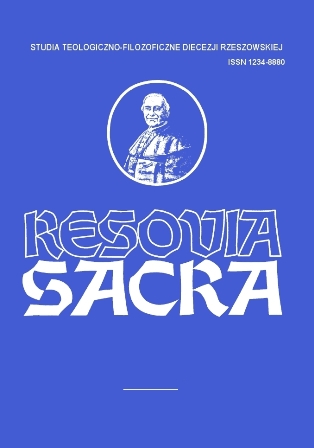
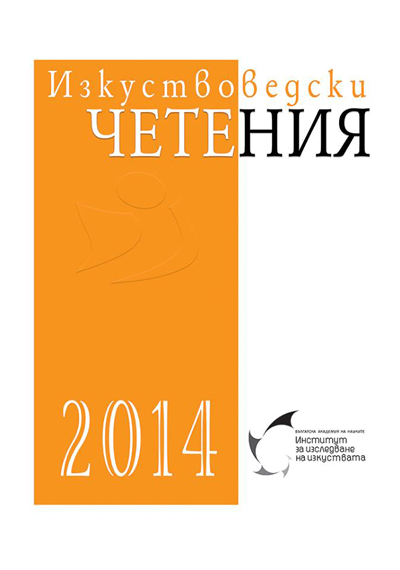
Hands language as a means of expression in rhetoric and fine arts, the rules of which were presented mainly by the Roman authors Cicero and Quintilian, continued to stir interest over the seventeenth and eighteenth centuries and strongly influenced artists and their iconographic reference points. English physician and rhetorician John Bulwer (1606–1656) devoted a few of his significant works to studying of the human gesture system, offering over 120 chirograms (types) of particular meanings. Spanish mathematician Juan Caramuel (1606–1682) studied the rhetorical wealth of chirologia, defining it as a major means of human communication. Hand gestures with fingers locked together is traditionally deemed to be a Christian prayer gesture, where palms are pressed together with fingers straight pointing up. In fact, the locked together fingers, known as early as the Antiquity, unlike the prayer gesture that emerged as late as the late medieval period, designated something else: a moment of deep sadness and suffering reflecting the strong tension of the mind. French artist Georges de La Tour uses this gesture as a basis for reflection on the vanity of worldly goods. Thus the position of the hands played the role of both a plastic device and an iconographic symbol.
More...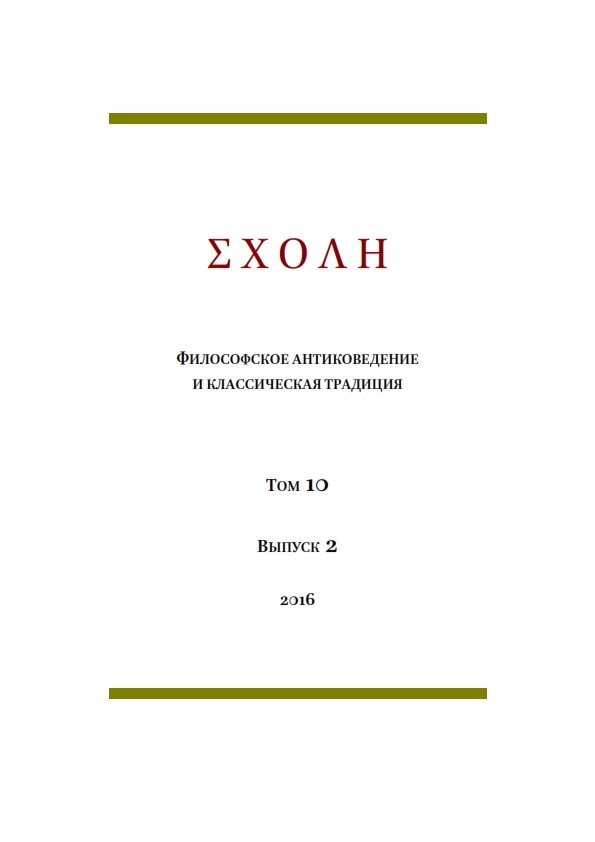
The use of term σύμβολον in Clement’s writings is problematic because of differences between common doctrine of symbol and symbolism expressed by Clement almost theoretically, and particular examples of symbolism and allegoric exegesis, where Clement’s wording and underlying conceptions are strongly dependent on the relevant contexts. In order to bring the most instances of σύμβολον in a system we propose some classifications. Firstly, according to their function, we distinguish ‘protective,’ ‘anagogic,’ and ‘manifestative’ symbols; secondly, according to the contexts in which they predominantly appear, such as the Pythagorean tradition, Greek Mysteries, Egyptian religion and hieroglyphic script, and extracts from the Greek grammarians; finally, in the context of Biblical exegesis, where one can distinguish instances of typology, morally instructive allegory and symbolism per se. In the latter case the nature of symbol is constituted by Divine Logos who “signifies the invisible link between earth and heaven.” Such a reading clarifies the ontological importance of symbolism for Clement’s metaphysics and philosophy, and helps to explain some difficulties in Clement’s writings actual for Western theology.
More...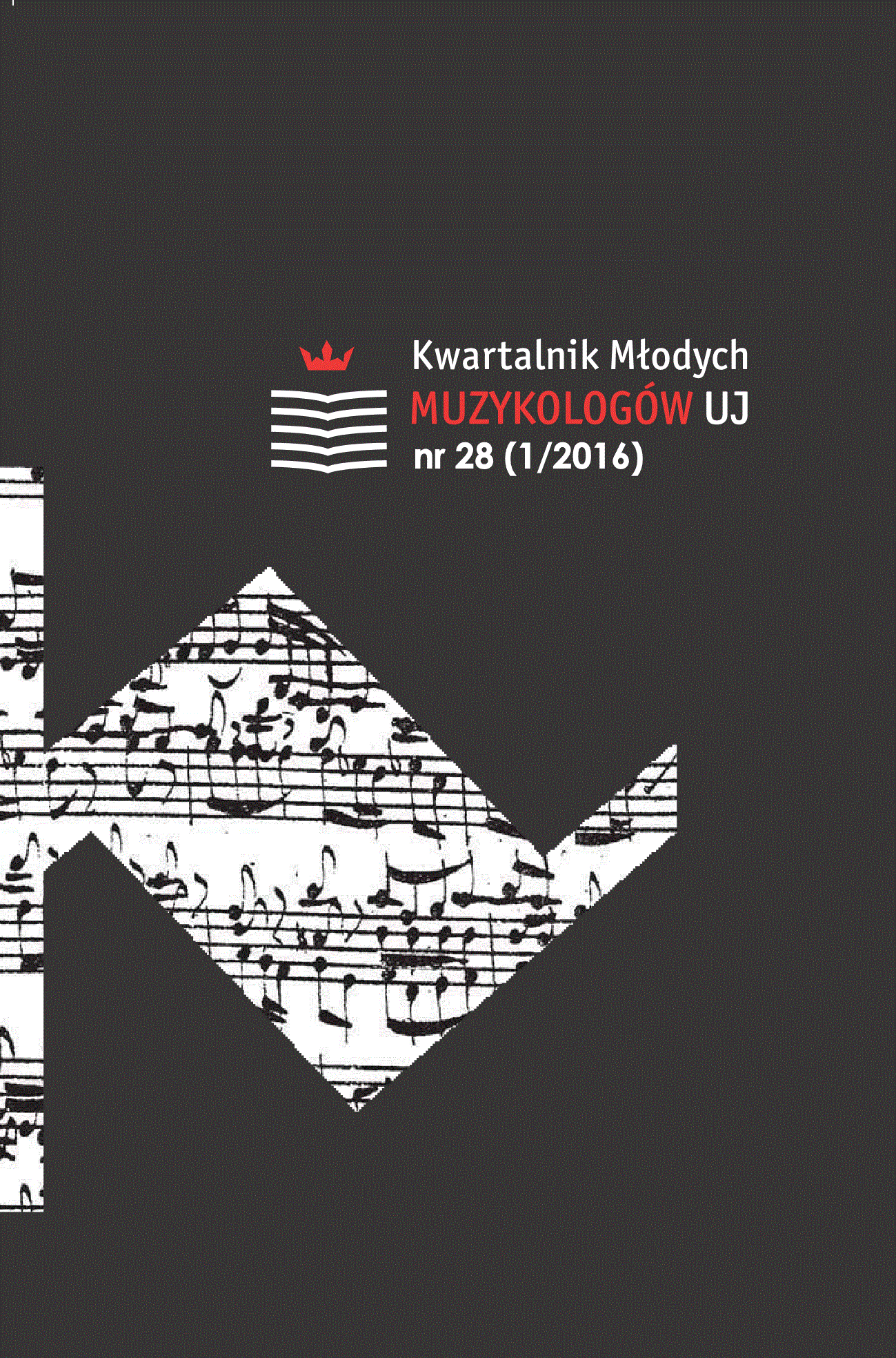
The music of Polish composers of the Romanticism is still quite a forgotten and undiscovered area. One of the examples of that issue are the works of Joseph Poniatowski (1816–1873), a composer who spent a significant part of his life abroad. His work concentrates mainly on the opera music, which was largely dictated by the environment from which he descended and in which he stayed. The purpose of this article is to draw attention to one of the composer’s forgotten works – Mass in F major, and also to presently selected topics related to this work.
More...
How to explain salvation as possibility offered to everyone and to the whole man? This question represents one of the most important subjects to which Bonaventure was turning his attention during whole of his life. Climax of this process is reached in his Hexaëmeron, the very last of his works containing twenty three conferences held in Paris, which, unfortunately could not be finished because of death of its author in 1274. Franciscan doctor presents in Hexaëmeron the figure of Triplex Verbum by which he brings to completion his soteriological cristocentrism: through the Verbum increatum everything was created, through the Verbum incarnatum everything was redeemed and through the Verbum inspiratum everything was revealed. These three moments of the Verbum expose objective dimension of the creative and redemptive speaking of God through the first and second cristological figures, and at the same time a cognitive dimension enabled by the third figure which illuminates man in his cognitive and sapiential return to the truth of God. Bonaventure was thus able to protect – against every form of antiintelectualistic spiritualism and also against rationalism closed in front of the revelation – and represent by his soteriological cristocentrism the very essential subject of his thinking: the unity of Christian knowledge in which mind, heart, reason and love are united in an intellectual and affective return to the mystery of God, who supports and includes everything.
More...
Psalm 133 is by its very placing at the end of a small collection of Psalms of the Ascent in the composition of the Masoretic text presented as a climax of the human fellowship and its ascent. And the climax consists in the brotherly dwelling. Whole literary composition of the Psalm 133 testifies, by the use of various poetic devices, that brotherly dwelling is not some spontaneous, natural phenomenon. On the contrary: its achieving is a fruit of orderliness and lifelong endeavour which protect the dwelling as such and lead it, in its permanent process of transformation, into goodness and amiability. This process has to be – essentially and continuously – permeated by the gift of sanctifying grace.
More...
The article examines the Bulgarian branch of the Unity Church – a part of the New Thought Movement, which arose in the US as result of the Revivalist Movement, but turned into a New Religious Movement. The main question in the study is the social basis of this new spiritual community, which combines believe and mind, considering the God as Infinite Intelligence and as divine energy and accepting the Divine nature of man. It is describes the establishment and ideology of this small and closed community and gives hypothesis about its connection with other New Religious Movement groups as the Universal White Brotherhood, the Nazarite community.
More...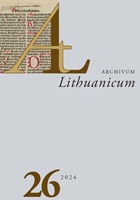
In September 2024, the Martynas Mažvydas National Library of Lithuania (NLL ) procured a copy of the Postil (1591) by Jonas Bretkūnas (LNB NPDA F: D1406729/1591). It is the 11th copy kept on file at Lithuanian libraries and museums, and the third Postil outside of Bibliography of Lithuania Lietuvos bibliografija (LB I, 1969 and LBP, 1990) currently held at Lithuanian memory institutions. This copy of the Postil is the oldest Lithuanian book at the NLL . The goal of this article is to introduce the new copy to the academia and the culture society by describing its condition and binding, establishing its provenience, scrutinising the data attesting to the culture of reading and handwritten entries in particular. The copy is studied de visu according to the methodological analysis of the book, with a particular focus on dynamic factors: changes in the meaning of functions and the reciprocal relationship between the book and society. The proveniences testify that in the 19th century, this was a household book that had at least four owners: (1) the unnamed mother of Urtė Ostwald (until 1830); (2) Urtė Ostwald (as of 1830); (3) Friedrich Fritz Ostwald Jr.; (4) E. Skėrys (between 1860 and 1893, at the very least) of Senieji Vainočiai (Ger. Alt Weynothen in Prussian Lithuania, near to Tilžė [Ger. Tilsit]). The published testimony of the peers indicates that in the 20th century, (5) it belonged (until 1988) to Mina Bentkus (born in 1900) of Büsingen (German exclave in Switzerland), (6) and (as of 1988) to Fricas Skėrys (1919–1994) of Mannheim (Germany). In early 20th century, the book was transferred from its original location in Prussian Lithuania to Switzerland (to Feuerthalen near Schaffhausen), following the move of the home church community of Evangeliška liuteriška Betliejaus draugystė (The Evangelical Lutheran Fellowship of Bethlehem) under Rev. Endrikis Kalvaitis (Heinrich Kallweit, 1937– 1915) to the same country. In around mid-20th century, the religious books that Prussian Lithuanians had in their possession were collected by Mina Bentkus, who in 1988 handed them over to the German evangelical Lutheran priest Fricas Skėrys. The main hallmark which identifies the copy procured by the NLL as the one that Mina Bentkus had and passed on to Fricas Skėrys is the 1830 provenience by Urtė Ostwald, as recorded in Domas Kaunas’s 1991 de visu inventory of the Postil kept at Skėrys’s home.
More...
The relationship between Orthodoxy, Romanian spirit and Universality is a topic of deep reflection in Romanian thinking, with significant impact onto national and cultural identity. Nichifor Crainic, Sandu Tudor and the holy father Dumitru Stăniloae offer valuable insights into how the Orthodox faith influences and determines Romanian values, traditions and spirituality, while contributing to an understanding of their role within universality.For Nichifor Crainic, Orthodoxy is a fundamental element of identity, inseparable from Romanian culture and politics. Hence the need for a governance in accordance with Orthodox principles, that is, an ethnocracy. Universality becomes a secondary ideal, determined by the loyalty to the Orthodox and national identity.Conversely, Sandu Tudor views Orthodoxy as a spiritual tradition that transcends politics, universality being a product of national specificity. The holy father Dumitru Stăniloae leans towards an ethical and community vision. Orthodoxy is, in his vision, an integrating force, capable of being open to external influences without losing its essence, through a communion of traditions.
More...
Church architecture from the 8th century represents an essential chapter in universal history and culture. It marks a period of transition and synthesis between the cultural influences of late antiquity and the early Middle Ages, reflecting the social, political and religious changes of the era. The architectural styles developed during this period, such as the Christian basilica or the first forms of Byzantine architecture, offer a profound perspective on how faith and culture shaped sacred space.The preservation of these buildings and their specific elements is of particular importance for future generations. They are not only monuments of faith, but also valuable historical testimonies, which provide information about the construction techniques, the materials used, as well as the symbolism and aesthetics of the era. By protecting and conserving them, the continuity of a living link with the past is ensured, allowing a better understanding of the cultural and spiritual identity of humanity.This paper aims to analyze the characteristics of ecclesiastical architecture of the 8th century, its importance for the global cultural heritage and the need to protect these masterpieces for the future.In the 8th century, the region of Wallachia, which is today part of Romania, was in a period of cultural and historical transition. The influences of ecclesiastical architecture of this period are difficult to identify precisely due to the lack of direct sources and well-preserved ruins. However, some general features can be highlighted, taking into account the historical and cultural context. In the 8th century, the influence of the Byzantine Empire was predominant in the south of the Danube, and elements of Byzantine architecture began to penetrate the Wallachia area. Building materials included stone and brick, and churches built during this period (or immediately after) reflected the use of simple forms, with a cruciform plan and domes. Local traditions and syncretism include the church architecture of Wallachia during this period, which reflected a mixture of Byzantine influences and local traditions.Din cauza invaziilor și migrațiilor repetate, multe structuri religioase din această perioadă nu s-au păstrat. Totuși, cercetările arheologice din România au scos la lumină urme ale unor așezări și sanctuare creștine timpurii.Church architecture is one of the most impressive artistic and cultural expressions of humanity, having a profound meaning throughout history and maintaining its relevance to this day. It reflects not only the religious beliefs of the communities, but also the artistic, technological and social development of the eras in which it was created. Cultural and tourist heritage: Many churches are included in the UNESCO heritage (for example, the Monasteries of Bukovina or the Notre-Dame Cathedral in Paris), attracting millions of visitors annually. Continuing the tradition: Currently, church architecture combines tradition with innovation, preserving the symbolic essence while adopting modern techniques. Sources of inspiration: Churches continue to inspire artists, architects and designers with their beauty and complexity. Spaces of contemplation: They remain places of prayer, meditation and spiritual refuge for people around the world. Church architecture is more than an artistic expression; It is a living testament to the faith, culture and identity of the communities that created it. From early basilicas to modern cathedrals, these sacred edifices continue to inspire respect and admiration, connecting the past with the present and spirituality with art.
More...
The Mystery of the Priesthood in the Orthodox Church is deeply anchored in Christian doctrine and practice, representing a fundamental pillar of spiritual and community life. The Holy Fathers, including St. John Chrysostom, extensively explored the sacredness and responsibilities of the priesthood, emphasizing its crucial role in mediating divine grace and in the spiritual leadership of the faithful. The priesthood is presented not only as a liturgical function, but as a vocation that involves a profound spiritual transformation, which is equivalent to a permanent state of sacrifice and dedication in divine service. This mystery is manifested in a double dimension: an ontological one, through which the priest becomes an intermediary between God and man, and a functional one, oriented towards the administration of the Holy Mysteries and the moral and spiritual guidance of the community. Reflecting on the nature and consequences of the Priesthood, Orthodox theology emphasizes its continuity from Christ through the Apostles, to contemporary priests, who are seen as true stewards of the divine mysteries. The current study aims to deepen the theological and spiritual understanding of the Priesthood by analyzing the relevant patristic and scriptural texts. It will examine how this mystery contributes to the perpetuation of Christ's mission and presence in the world, emphasizing the essential role that the priest plays in the individual and collective salvation of the faithful, as well as its impact on the structure and dynamics of ecclesiastical life.
More...
The deepest meaning of creation is revealed only in a correct understanding of the Incarnation, the crucified sacrifice of Christ, penetrating into the "profound meaning of the Cross" and of the Resurrection as the crowning of His redemptive activity, according to which "the Cross represents a new step in Christ's work of our salvation, the highest culmination of it, having on the one side the Incarnation and on the other side, and closely united with the Cross, the Resurrection from the dead. In this way, the perspective of Orthodox missionary theology witnesses permanently through the Cross of Christ and the result of the Resurrection, thus emphasizing the joy in both aspects due to their permanent connection because in the sacrifice of Christ is seen the perspective of the Resurrection.
More...
In the Great Eclection, in addition to the other petitions, there is the prayer that "may this oil be blessed with the power, the work and the coming of the Holy Spirit". In this petition is reflected what Father Stăniloae calls the awareness that "the Holy Spirit is the power that sustains in us - through the prayer of the Church - the tension towards resurrection: it is He who will bring about our resurrection by which we will participate in the risen, fully transparent body of the Lord, through our bodies themselves becoming fully transparent in the joyful experience of the treasures of His love". This awareness also accompanies the prayer for the sick person: "For the servant of God (N) and for his seeking in God and that the grace of the Holy Spirit may come upon him". Moreover, this is the conscience of the whole Church of Christ, the Church being the community of those who are advancing by the power of the Spirit of Christ towards the resurrection and the fullness of perfect communion with Christ and with all who believe
More...
The article "The Evolution of Church-State Relations in the Romanian Space – From Byzantine Symphony to Contemporary Challenges" explores how the relationship between secular authority and the Church has evolved throughout history, focusing on the Orthodox tradition and the Romanian context. The first part introduces the concept of the Byzantine Symphony, which served as the foundation for the relationship between Church and State in Orthodox tradition, promoting a model of cooperation and balance influenced by Byzantine heritage. After that, we will see how this model was applied in the Romanian space, highlighting the historical particularities of the relationship between rulers and the Church. Special attention is given to the communist period, when the Romanian Orthodox Church was subjected to strict state control under the atheist regime but managed to survive through a complex relationship with the authorities. After 1989, the Church-State relationship was redefined, with both democratization processes and debates on the role of the Church in contemporary society.The second part provides an overview of the legislation regulating Church-State relations after 1990. It analyzes the 1991 Romanian Constitution, which establishes the principle of religious neutrality of the state, and the Statute of Organization and Functioning of the Romanian Orthodox Church, which defines the Church's autonomy. Additionally, it discusses the legal provisions that allow local governments to finance projects in collaboration with the Orthodox Church and other legally recognized religious denominations.
More...
The essential role of the Church in this facet of her mission is deeply rooted in Christian dogmas, reflected in the Holy Gospels and in the teachings of the Fathers of the Church. According to them, illness can be seen as a result of sin or as a divine test, intended to strengthen virtue and strengthen the relationship with God. Caring for the suffering is not only a moral duty, but also a form of adoration, an offering pleasing to God, comparable to the sufferings of martyrs and ascetics. Priests play a dual role, serving as spiritual guides and partners in the process of physical and spiritual healing of the faithful. This pastoral and social activity takes on a special importance in a strongly secularized and materialistic society, which often ignores the spiritual aspect of life. The text also emphasizes virtuous living practices, such as prayer and fasting, as methods of disease prevention and as a means of promoting a healthy life on a physical and spiritual level. Thus, the Church, following the example of Jesus Christ, continues to be a central pillar in promoting health and well-being, reaffirming the divine imperative to serve and care without reservation.
More...
The theological complexity and ecclesial implications of pneumatology within the Trinitarian communion are emphasized, highlighting the fundamental role of the Holy Spirit in mediating the interaction between unity and diversity in the Christian Church. Exploring the Trinitarian dynamics manifested at the Descent of the Holy Spirit, the research emphasizes how the presence of the Holy Spirit strengthens the communal identity of the Church, facilitating the harmonious integration of cultural and spiritual diversity into a common unity of faith. The study investigates the theological, scriptural and traditional foundations that support consubstantiality and divine perichoresis as models for structuring relationships within ecclesial communities, highlighting the influence of these conceptions on current ecumenical dialogue and on the way of addressing contemporary social challenges. By integrating the synthesis of patristic theology with modern theological reflections, the work advances a reinterpretation of the role of the Holy Spirit in cultivating a unity that values and celebrates the internal diversity of the Church. By proposing a revitalized Trinitarian framework, it offers an innovative perspective on the realization of ecclesial unity in the context of today's religious and cultural pluralism.
More...
The Orthodox Church, as an institution with a double functionality – religious and social – is founded on the Christian doctrine instituted by Jesus Christ and perpetuated by a rigorous hierarchical structure. This dual structure is vital for the perpetuation and functionality of the Church, facilitating the salvation of souls through participation in the Sacred Mysteries, in a community setting. This paper analyzes the dynamics of the parish, considered the basic structural unit and at the same time the most exposed to vulnerabilities within the Orthodox Church, in the context of the year dedicated to parish and monastic mission. Contemporary challenges and strategies for revitalizing parish community life are investigated, with a particular emphasis on preserving the doctrinal heritage and adapting to the current needs of parishioners. Scriptural references illustrate the model of early Christian communities, emphasizing the importance of unity and communion, reflections of divine unity, in the parish liturgical structure, focused on the celebration of the Eucharist. The study also addresses the deterioration of the connection between parishioners and the parish structure in the contemporary landscape, a consequence of the influences of atheistic regimes and the process of secularization. A redefinition of the life of the parish community is proposed, through the active and non-discriminatory integration of all demographic segments of the parish, in order to counteract the tendencies of anonymity and social disintegration, essential for revitalizing the authenticity of the Orthodox Christian confession in modern society.
More...